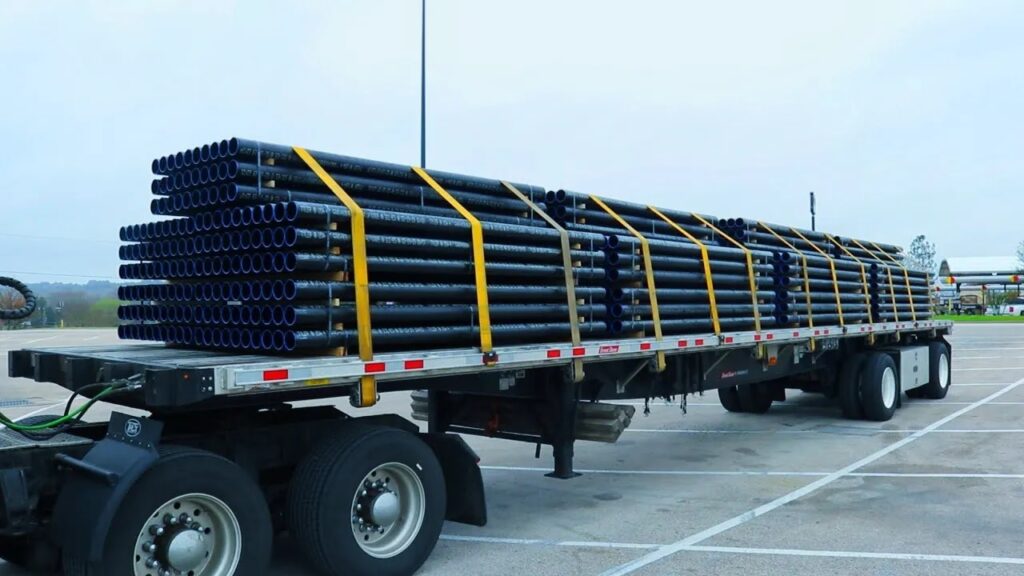How to Ensure the Safety of Flatbed Loads?
2 min read
Safety regulations, standard practices, and transportation necessities are vital to the safety of flatbed loads.
Follow the guidelines below to guarantee a safe flatbed load and flatbed driving.
1. Use the appropriate tie-down equipment and arrange cargo placement.
Determine the number of tie-downs needed and where they should go after loading and distributing the cargo weight securely and equitably.
The Federal Motor Carrier Safety Administration (FMCSA) requires at least one tie-down for every 10 feet of cargo, and any percentage in excess of that.
A 35-foot-long flatbed freight, for example, would need four tie-downs.
The overall working load limit of the securement devices, chains, and tie-down straps should also be considered. Load limits should be set at 50% of total cargo weight.
Check the manufacturer’s instructions or visible tags for the restrictions.
When choosing securement devices, keep these short guidelines in mind.
- Check that the chains, chain binders, and ratchet straps can keep your cargo securely tied while the rig is moving.
- To reduce possible damage, use cargo straps made of softer materials such as plastic pipe and timber.
- Invest in corner and edge covers to help your tie-down straps last longer.
- Conduct fleet safety training and coaching for your drivers and employees to ensure that everyone is familiar with the right equipment and how to set it up.
It is usually a good idea for drivers to do brief checks every 50 kilometres. The checks confirm that the cargo has not moved and that the tie downs are still in place.
2. Double-check your specifications and appropriately divide the cargo
Avoid exceeding the specified maximum freight weight of your flatbed trailer. To avoid the flatbed trailer from tipping or swerving, distribute the contents equally.
Adhere to these common recommended practices.
- Calculate the freight weight in order to correctly distribute it and secure the cargo.
- Begin piling the burden in the center and work your way outward.
- To maintain a low center of gravity, place heavier goods above the axles and lower to the deck.
- Place 60% of the weight in the front half of the flatbed trailer to prevent the rear end from becoming too heavy and awkward during travel.
3. Take the necessary safeguards
When loading, securing, unloading, and transporting goods, flatbed truck drivers must take extreme care. Drivers should also exercise caution while operating on or near trailers to prevent accidents and life-threatening injuries.
Follow these safety precautions.
- Provide necessary equipment, such as ankle supports and non-slip footwear.
- Make everyone aware of any blocked paths or tiny ledges that might cause someone to fall or lose their balance.
- When loading, securing, transporting, and unloading flatbed goods, ensure that your workforce follows standard procedure.
- No one should leap from the trailer, and everyone descending must utilize the stairs and descend slowly.
- Utilize a fleet safety solution that enables you to monitor risky flatbed trucking driving behavior.
Ready to get significant insights into efficient, safe, and cost-effective flatbed transporting processes? Try a https://www.flatbedequipmentinc.com/ right now.





